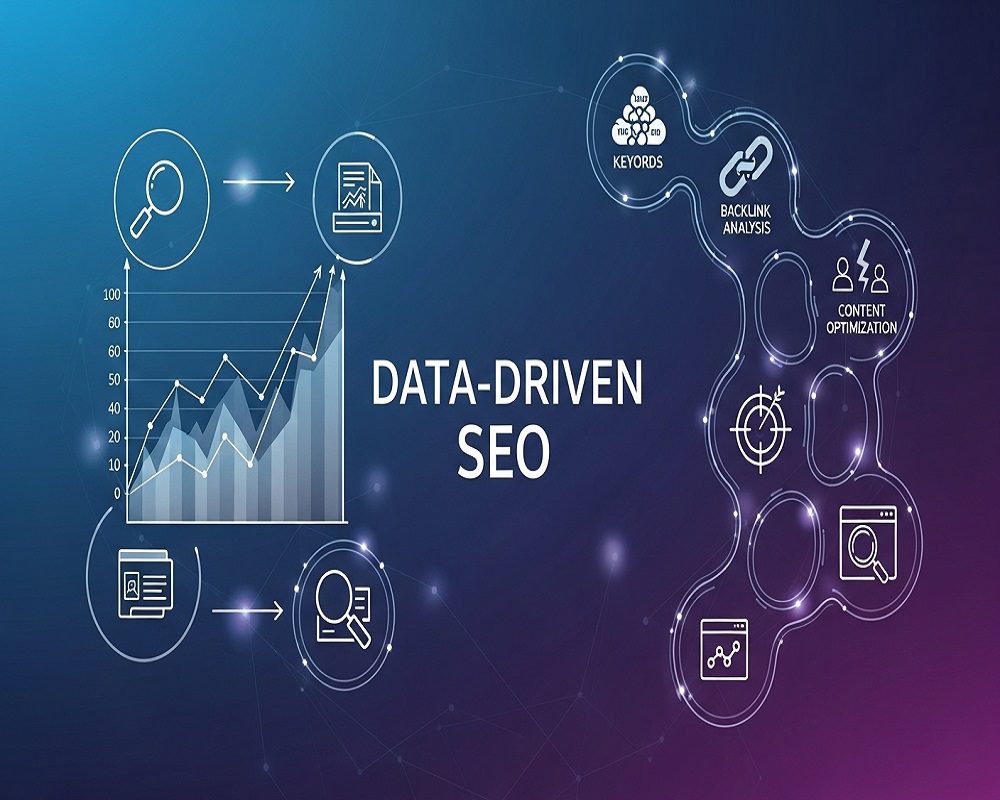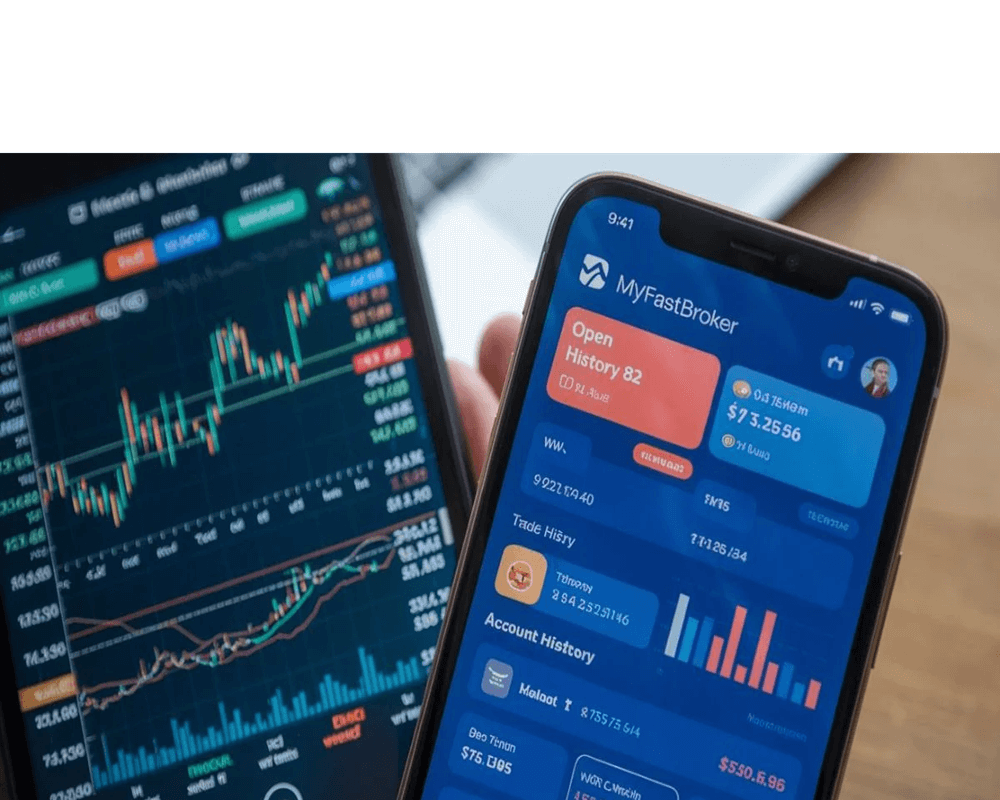Introduction to Data-Driven SEO
In the rapidly evolving digital landscape of 2025, search engine optimization (SEO) has transcended traditional guesswork and intuition. Data-driven SEO emerges as a strategic approach that leverages analytics, metrics, and insights to inform every aspect of optimization efforts. At its core, data-driven SEO involves collecting, analyzing, and applying data from various sources to enhance website visibility, user engagement, and conversion rates on search engines like Google.
This method contrasts with conventional SEO by prioritizing empirical evidence over assumptions. For instance, instead of broadly targeting keywords, data-driven strategies analyze user search behavior, competitor performance, and site metrics to pinpoint opportunities. As search algorithms become more sophisticated with AI integrations, relying on data ensures adaptability and long-term success.
Why is this important now? With over 8.5 billion daily searches on Google alone, businesses must cut through the noise. Data-driven SEO aligns content with user intent, improves rankings, and drives measurable ROI. This comprehensive guide explores the fundamentals, benefits, application steps, tools, examples, and future trends of data-driven SEO. Whether you’re a marketer, business owner, or SEO specialist, mastering this approach can transform your online presence.
Defining Data-Driven SEO: Core Concepts and Entities
Data-driven SEO is an optimization methodology that uses quantitative and qualitative data to guide decision-making processes. It encompasses entities such as keywords, backlinks, user behavior metrics, and search engine algorithms, all interconnected through semantic relationships.
Key entities include:
- User Intent: Understanding why users search, categorized into informational, navigational, transactional, and commercial investigation.
- Performance Metrics: Impressions, clicks, CTR (click-through rate), bounce rates, and dwell time from tools like Google Analytics.
- Competitive Analysis: Benchmarking against rivals’ domain authority, backlink profiles, and content strategies.
- Technical Factors: Site speed, mobile-friendliness, and crawl errors influencing rankings.
Unlike traditional SEO, which might rely on keyword stuffing or generic link-building, data-driven SEO emphasizes holistic analysis. It integrates machine learning to predict trends and automate insights, ensuring strategies are proactive rather than reactive.
Semantic intent plays a pivotal role here. Search engines like Google use natural language processing (NLP) to match queries with content meaning, not just words. Data-driven approaches map entities to topics, creating content clusters that build topical authority. For example, for a query like “best running shoes,” data might reveal related entities such as “cushioning types,” “brand comparisons,” and “user reviews,” guiding comprehensive content creation.
The Evolution of Data-Driven SEO
The roots of data-driven SEO trace back to the early 2010s with Google’s Panda and Penguin updates, which penalized low-quality content and manipulative links. These shifts forced SEO professionals to focus on value-driven strategies, paving the way for data reliance.
By 2015, tools like Google Search Console (GSC) and Analytics provided accessible data, enabling practitioners to track performance metrics. The 2018 BERT update further emphasized context, making semantic data analysis crucial. In the 2020s, AI advancements, including Google’s MUM and generative AI, accelerated the need for data-driven methods to handle complex queries.
Today, in 2025, data-driven SEO incorporates big data, predictive analytics, and AI tools. Events like the Helpful Content Update (2023) reinforced the importance of user-centric, data-backed content. This evolution reflects a shift from reactive fixes to strategic, evidence-based planning, where data informs everything from keyword selection to content optimization.
Key Benefits of Adopting Data-Driven SEO
Implementing data-driven SEO yields tangible advantages that enhance efficiency and outcomes. Here are the primary benefits:
- Improved Decision-Making: Data eliminates guesswork, allowing precise adjustments. For example, analyzing GSC data can reveal underperforming pages for targeted improvements.
- Enhanced User Experience: By understanding behavior through heatmaps and session recordings, you can optimize for intent, reducing bounce rates and increasing conversions.
- Higher ROI: Focusing on high-impact keywords and strategies maximizes resource allocation. Businesses report up to 20% better returns with data-driven approaches.
- Competitive Edge: Insights into rivals’ tactics enable outmaneuvering, such as identifying content gaps or superior backlink opportunities.
- Adaptability to Changes: Real-time data helps navigate algorithm updates, ensuring sustained rankings.
- Scalability: Automation tools handle large datasets, making it feasible for enterprise-level SEO.
- Measurable Results: Clear KPIs track progress, facilitating reporting and justification of efforts.
These benefits collectively drive sustainable growth, making data-driven SEO indispensable in competitive markets.
How Data-Driven SEO Works: Core Components and Processes
Data-driven SEO operates through a cyclical process: collection, analysis, implementation, and measurement.
Data Collection
Gather information from multiple sources:
- On-Site Analytics: Tools like Google Analytics track traffic, user paths, and conversions.
- Search Console Data: Provides query impressions, CTR, and position data.
- Third-Party Tools: Ahrefs or SEMrush for backlinks and keyword research.
- User Feedback: Surveys and heatmaps for qualitative insights.
Data Analysis
Use statistical methods and AI to interpret data:
- Identify trends, such as seasonal keyword fluctuations.
- Segment data by demographics or devices.
- Apply machine learning for predictive modeling, forecasting ranking changes.
Implementation
Translate insights into actions:
- Optimize content with targeted keywords and entities.
- Build internal links to boost topical clusters.
- Fix technical issues based on audit data.
Measurement and Iteration
Monitor KPIs post-implementation and refine strategies. This feedback loop ensures continuous improvement.
Step-by-Step Guide: How to Apply Data-Driven SEO
Applying data-driven SEO requires a structured approach. Follow these steps for effective implementation:
Step 1: Set Clear Objectives and KPIs
Define goals like increasing organic traffic by 30% or improving conversion rates. Establish KPIs such as rankings, CTR, and ROI to measure success.
Step 2: Conduct Comprehensive Audits
Perform site audits using tools like Screaming Frog to identify technical issues. Analyze content for relevance and gaps.
Step 3: Research Keywords and User Intent
Use SEMrush or Ahrefs to find high-volume, low-competition keywords. Map them to intent stages in the buyer’s journey.
Step 4: Analyze Competitors
Benchmark against top performers. Tools like Moz provide domain authority scores and backlink data.
Step 5: Create and Optimize Content
Develop content clusters around core topics. Incorporate data-backed elements like statistics and visuals to enhance engagement.
Step 6: Implement On-Page and Technical SEO
Optimize meta tags, headers, and schema markup. Ensure mobile optimization and fast load times.
Step 7: Build and Monitor Backlinks
Acquire quality links through outreach, guided by data on referring domains.
Step 8: Track and Adjust
Use dashboards to monitor performance. A/B test changes and iterate based on results.
Automation, such as Python scripts for data processing, can streamline these steps.
Essential Tools and Technologies for Data-Driven SEO
A robust toolkit is vital for data-driven SEO. Here are top recommendations:
- Google Analytics 4 (GA4): Free tool for traffic and behavior analysis.
- Google Search Console: Insights into search performance and indexing.
- SEMrush: Comprehensive for keyword research, audits, and competitive analysis.
- Ahrefs: Excels in backlink tracking and content exploration.
- Clearscope or Surfer SEO: AI-driven content optimization based on SERP data.
- Hotjar: Heatmaps and session recordings for user behavior.
- Python Libraries (Pandas, Matplotlib): For custom data analysis and visualization.
- DataForSEO API: For scalable data retrieval in custom tools.
Integrate these with BI tools like Google Looker Studio for unified dashboards.
Real-World Examples and Case Studies of Data-Driven SEO
Practical applications illustrate the power of data-driven SEO.
Example 1: HubSpot’s Content Strategy
HubSpot used data from GSC and Analytics to identify high-impression, low-CTR queries. By optimizing pillar pages and clusters, they increased organic traffic by 50%.
Example 2: Nike’s Keyword Optimization
Nike analyzed search trends for product-related queries, incorporating user intent data to refine e-commerce pages, boosting conversions.
Example 3: A B2B SaaS Company
Using Ahrefs, a SaaS firm identified content gaps in competitors’ strategies, creating targeted guides that ranked in top positions, driving leads.
These cases show how data turns strategies into results.
Common Myths and Misconceptions About Data-Driven SEO
Several myths hinder adoption:
Myth 1: It’s Only for Large Businesses
Reality: Free tools like GA4 make it accessible for all scales.
Myth 2: Data Replaces Creativity
Data informs but doesn’t stifle; it enhances content relevance.
Myth 3: More Data Always Means Better Results
Quality over quantity; focus on relevant metrics.
Myth 4: It’s Too Technical
User-friendly tools and no-code options simplify processes.
High-Volume Questions About Data-Driven SEO
Addressing popular queries enhances understanding:
1.What Is the Difference Between Data-Driven SEO and Traditional SEO?
Traditional SEO relies on best practices and intuition, while data-driven uses metrics for informed decisions, leading to more precise outcomes.
2.How Does Data-Driven SEO Improve Rankings?
By aligning content with user intent and optimizing based on performance data, it boosts relevance and engagement signals.
3.What Are the Best Metrics to Track in Data-Driven SEO?
Key metrics include organic traffic, CTR, bounce rate, conversion rate, and keyword positions.
4.Can Small Businesses Implement Data-Driven SEO?
Yes, with free tools and focused strategies on core keywords and user data.
5.How Does AI Integrate with Data-Driven SEO?
AI tools analyze vast datasets, predict trends, and automate optimizations.
6.What Role Does User Behavior Play in Data-Driven SEO?
It informs content adjustments, like reducing bounce rates through better UX.
7.How to Measure ROI in Data-Driven SEO?
Track conversions attributed to organic traffic against costs.
8.Is Data-Driven SEO Affected by Algorithm Updates?
Yes, but data allows quick adaptations to changes.
9.What Are Common Challenges in Data-Driven SEO?
Data overload, privacy concerns, and integration issues; overcome with focused analysis and compliant tools.
10.How to Start with Data-Driven SEO as a Beginner?
Begin with GA4 and GSC setup, then analyze basic metrics.
The Future of Data-Driven SEO
Looking ahead, data-driven SEO will be shaped by AI, personalization, and ethical data use. Predictive analytics will forecast trends, while generative AI optimizes content at scale.
Voice and visual search will demand multimodal data analysis.
With privacy regulations like GDPR evolving, zero-party data from user interactions will gain prominence. Integration with GEO (Generative Engine Optimization) will blend SEO with AI-generated responses.
By 2030, expect fully automated, real-time SEO systems driven by machine learning.
Conclusion: Embracing Data for SEO Excellence
Data-driven SEO represents the pinnacle of modern optimization, blending analytics with strategy for superior results. By applying the steps, tools, and insights outlined, you can elevate your site’s performance, outpace competitors, and achieve sustainable growth. Start small, iterate with data, and watch your digital strategy thrive in an increasingly data-centric world.
Saad Raza is an SEO specialist with 7+ years of experience in driving organic growth and improving search rankings. Skilled in data-driven strategies, keyword research, content optimization, and technical SEO, he helps businesses boost online visibility and achieve sustainable results. Passionate about staying ahead of industry trends, Saad delivers measurable success for his clients.





